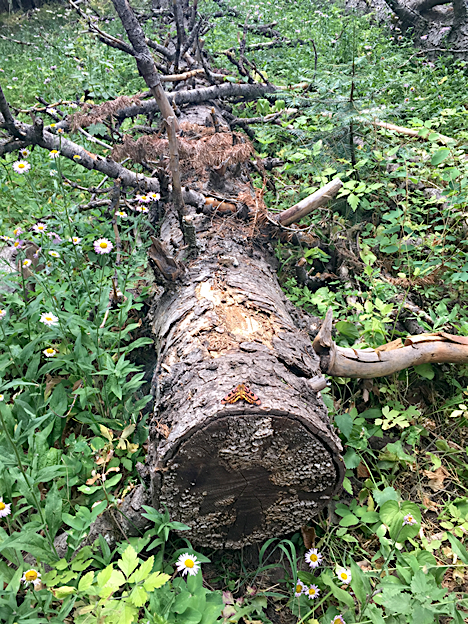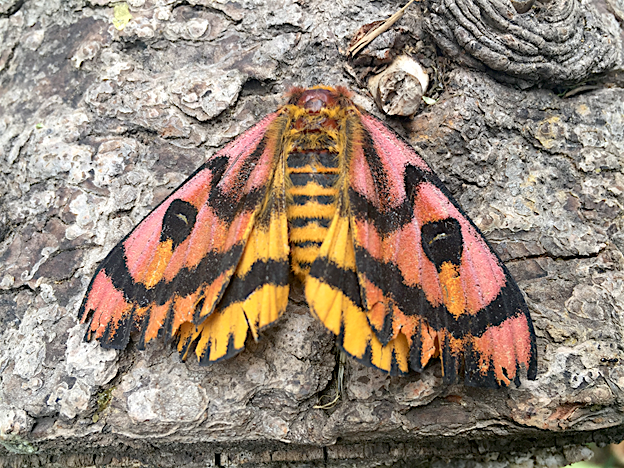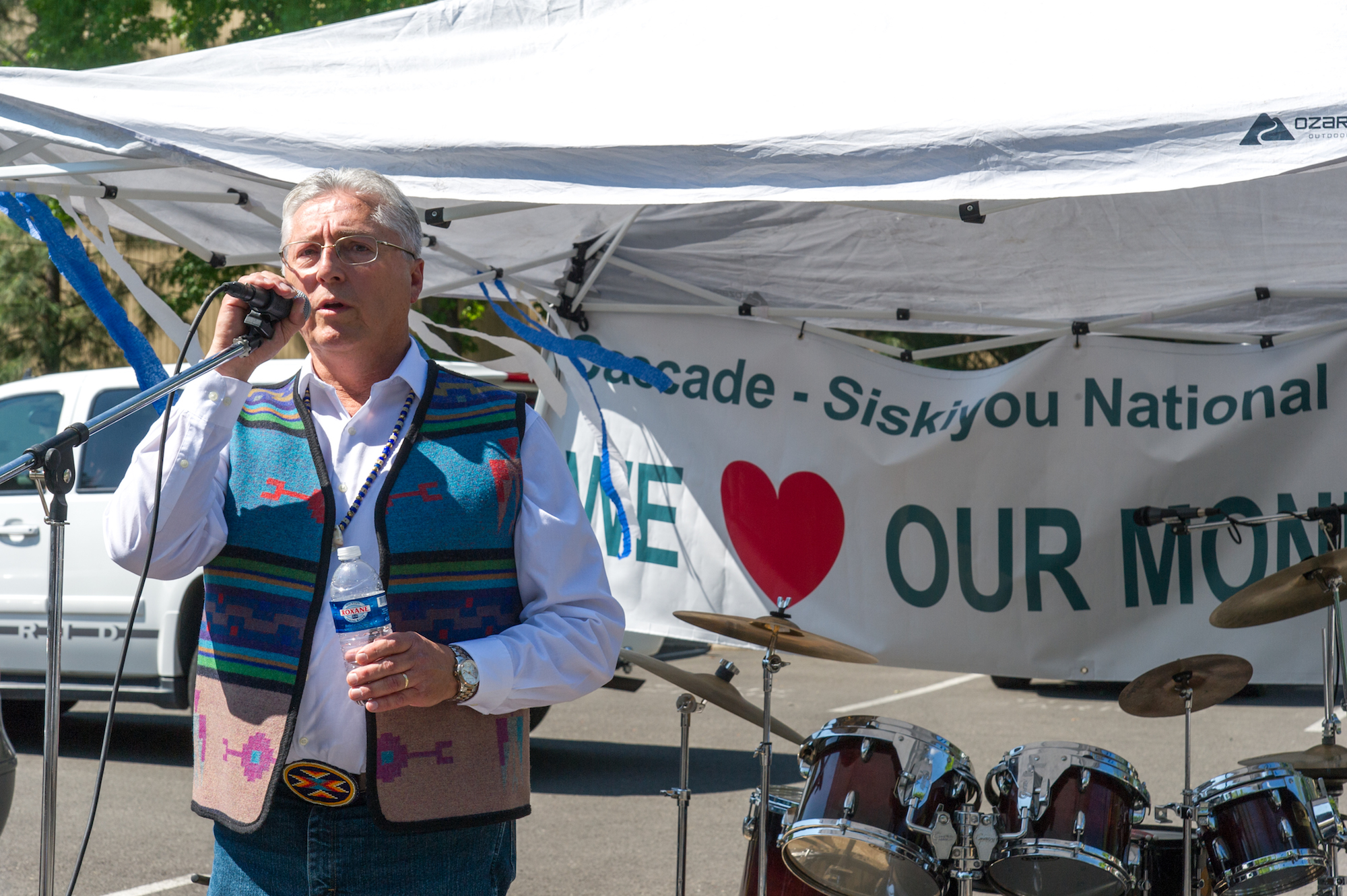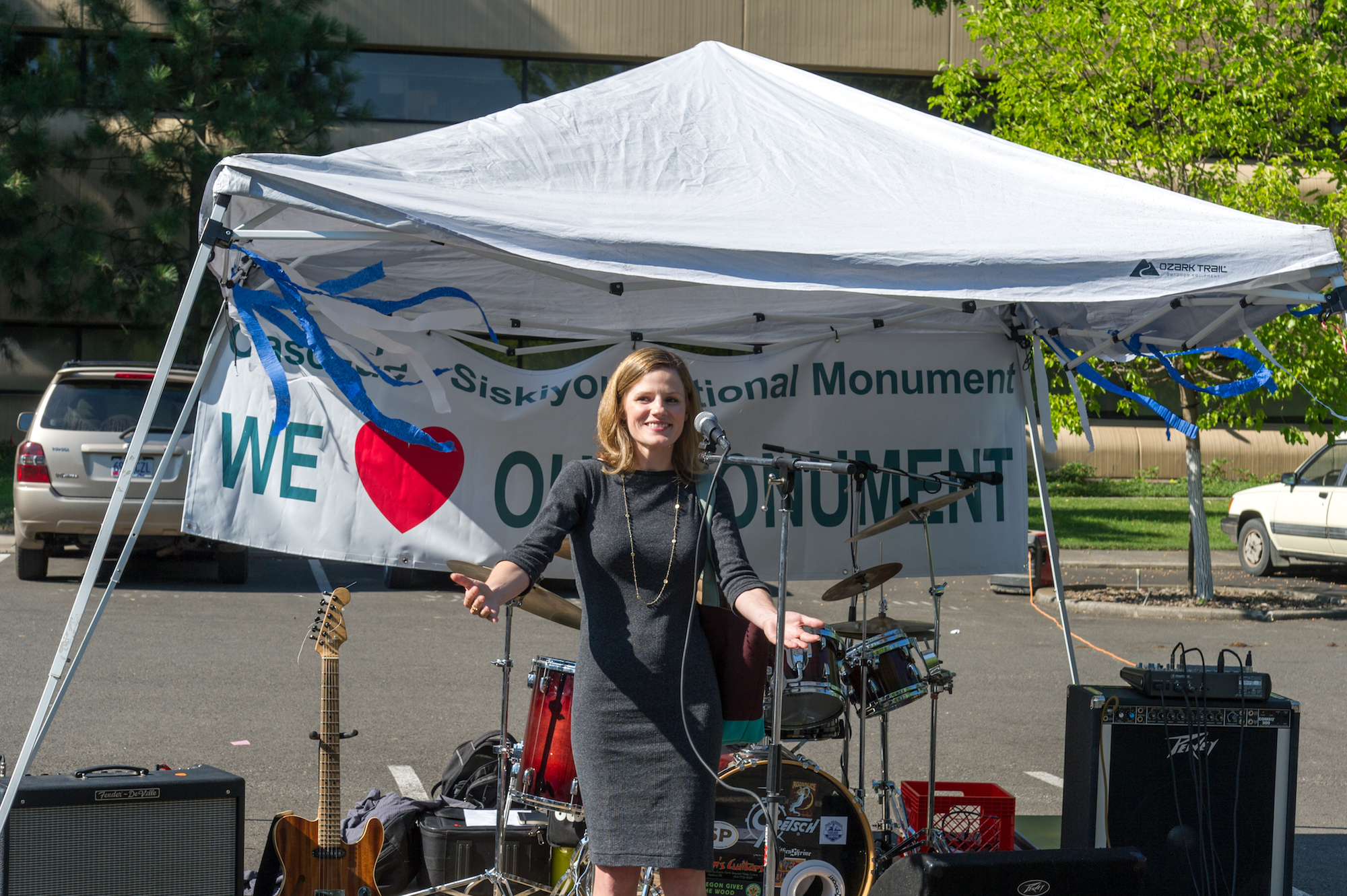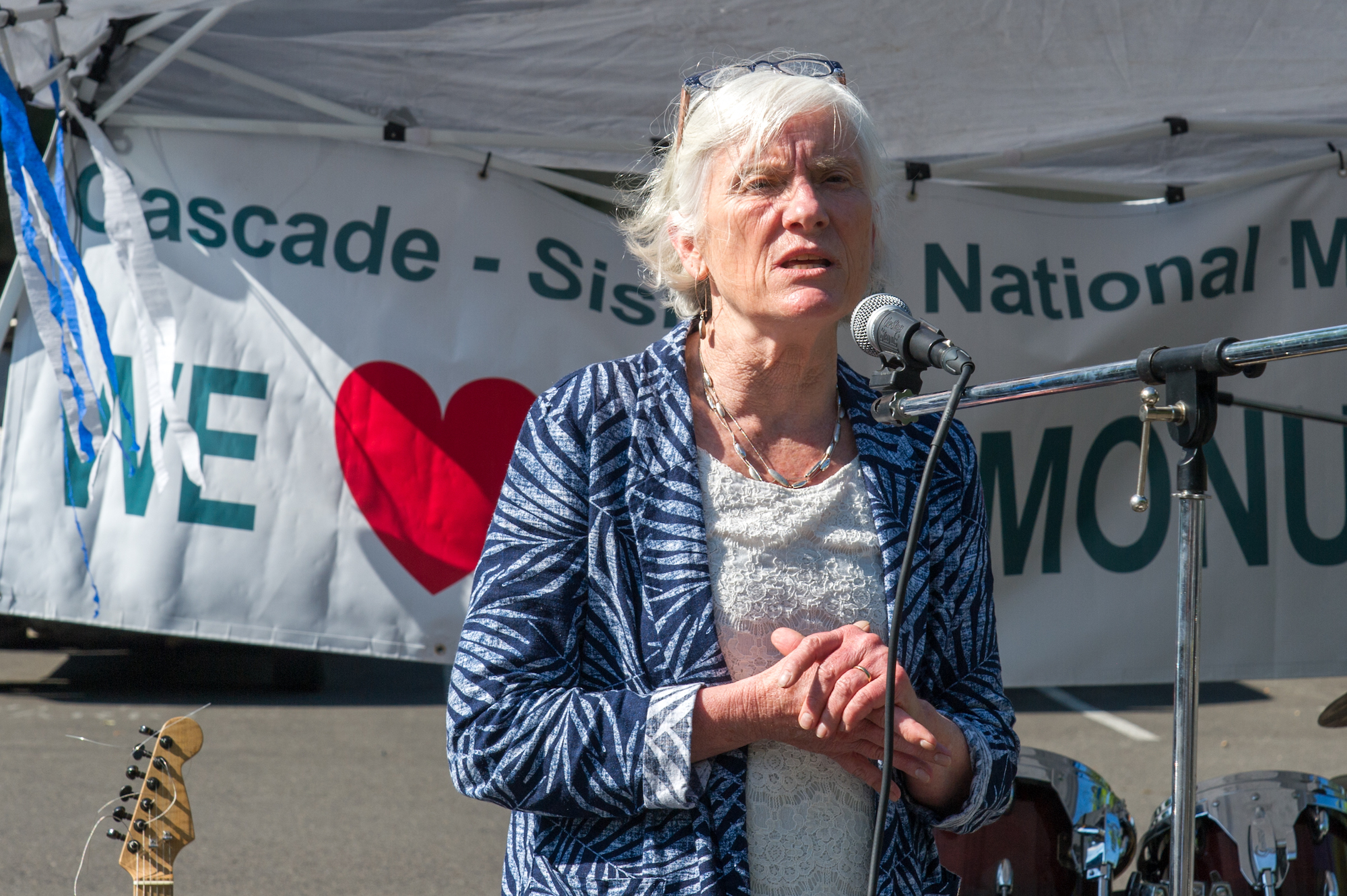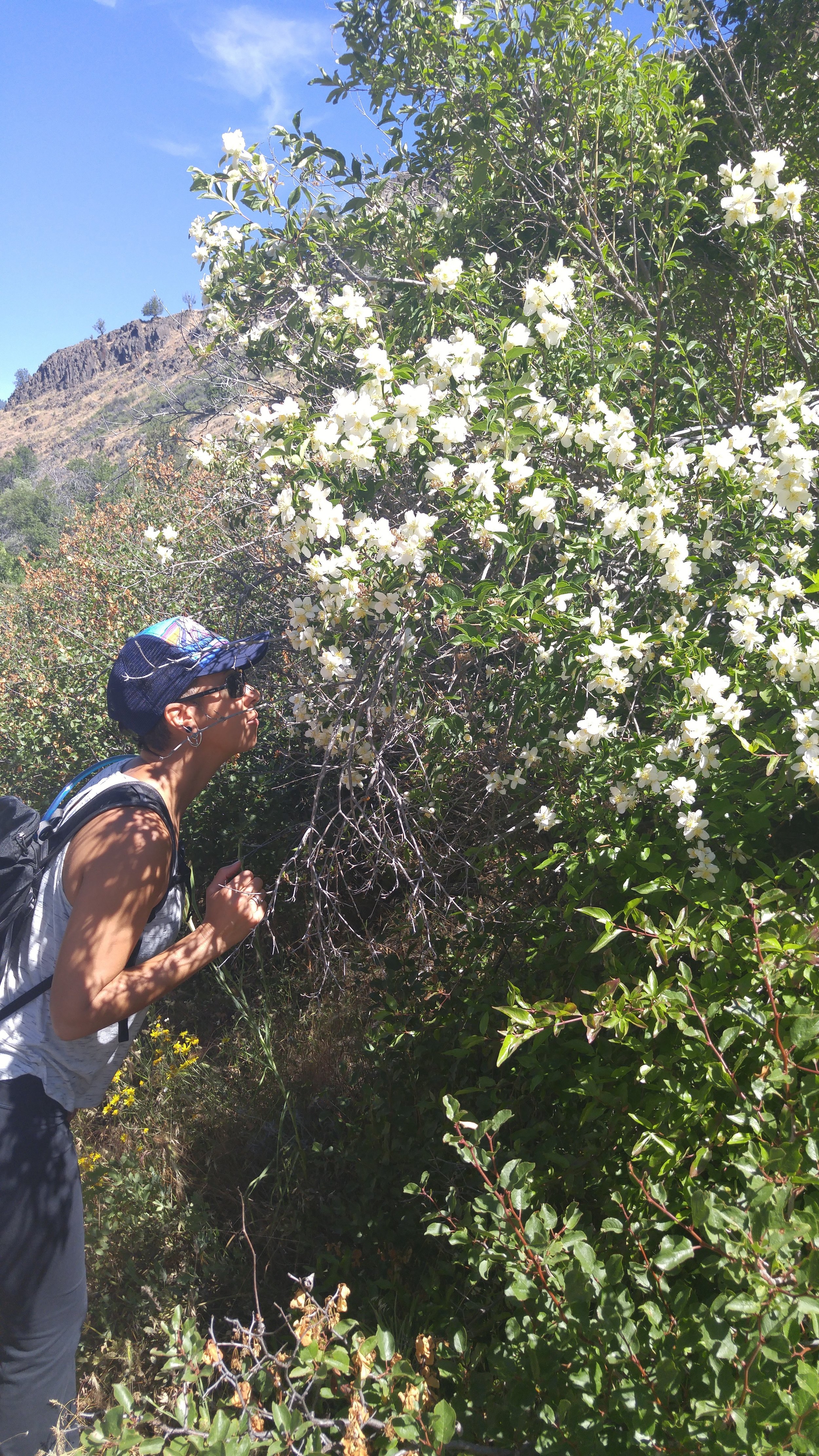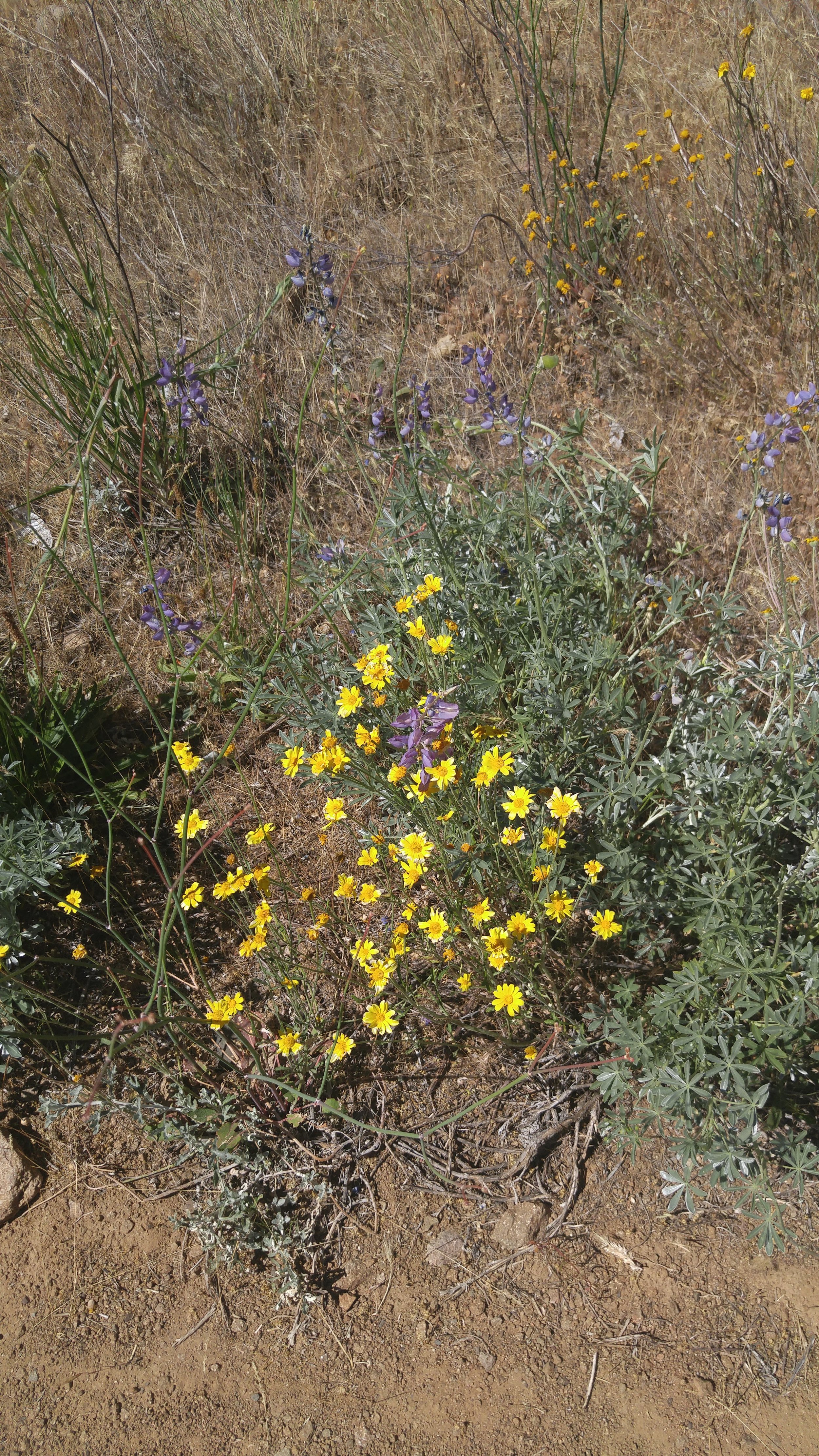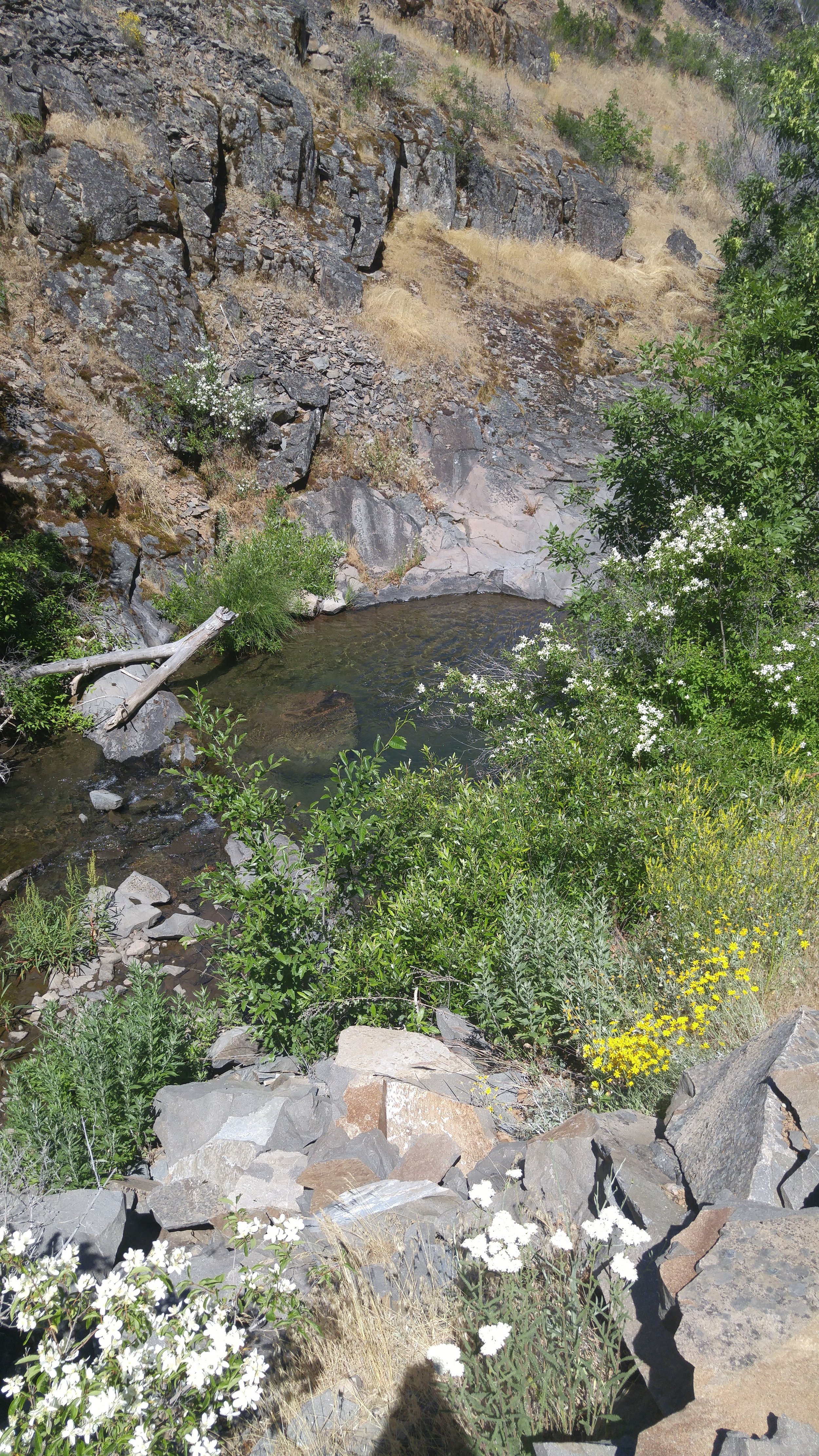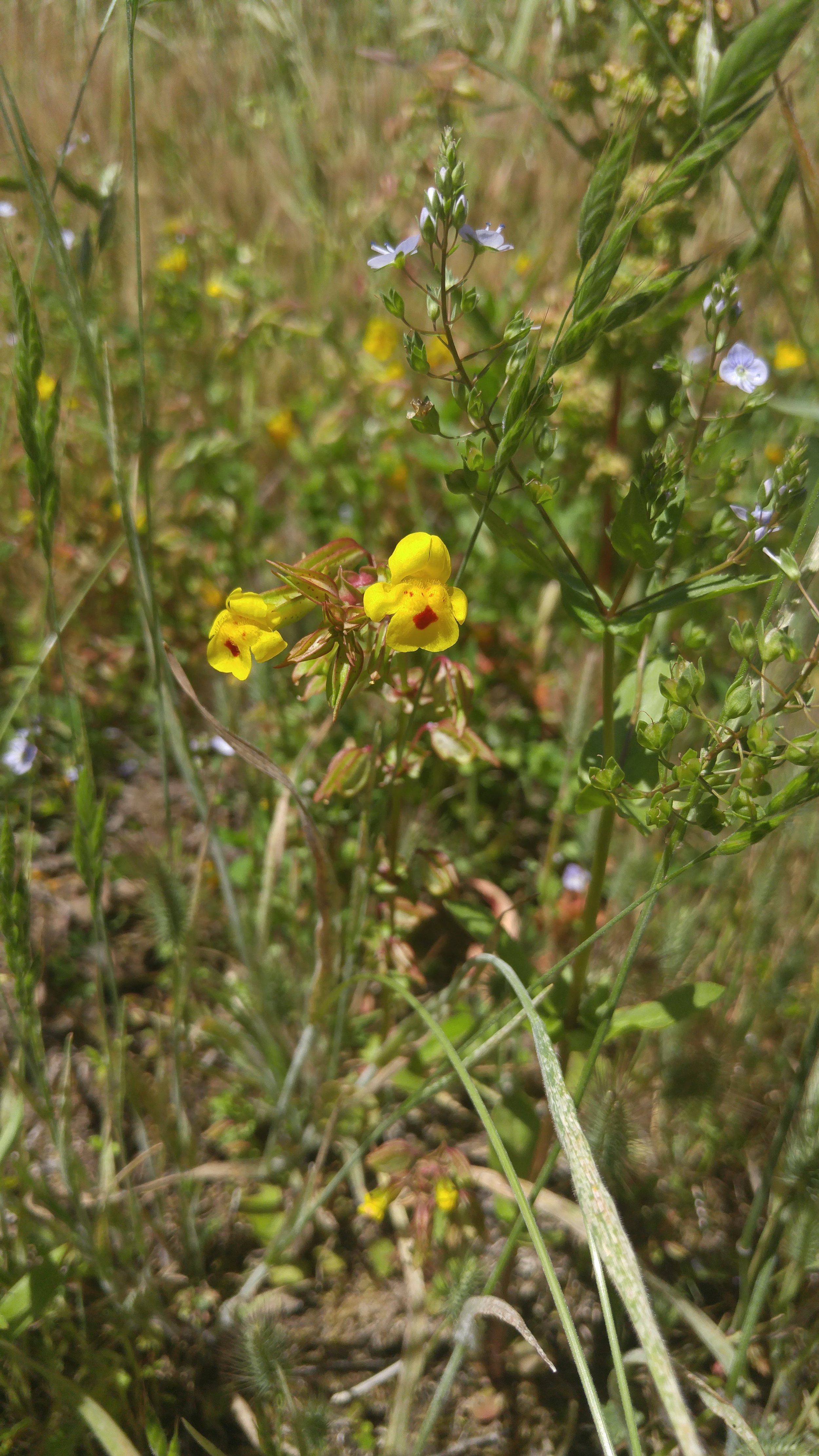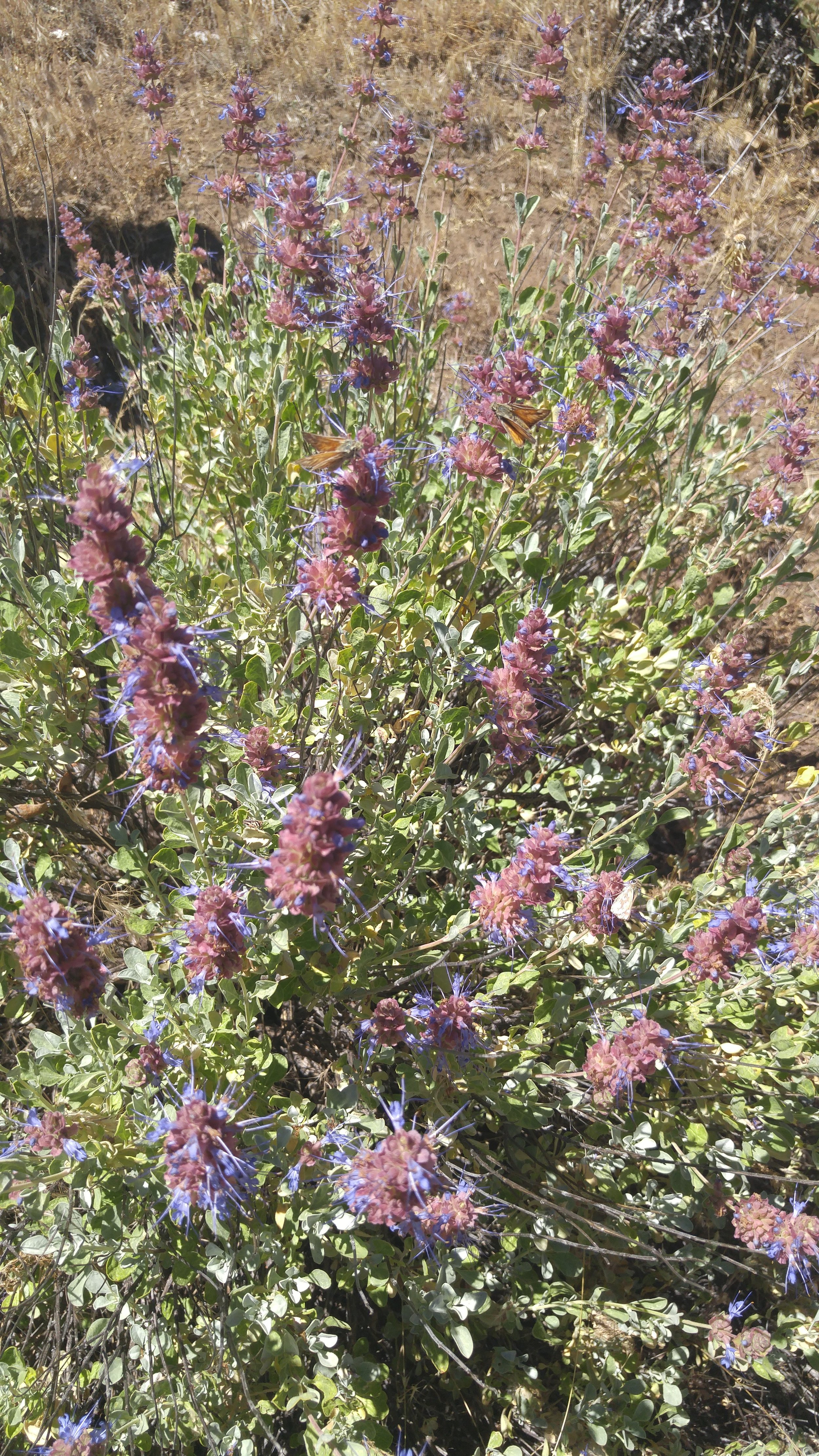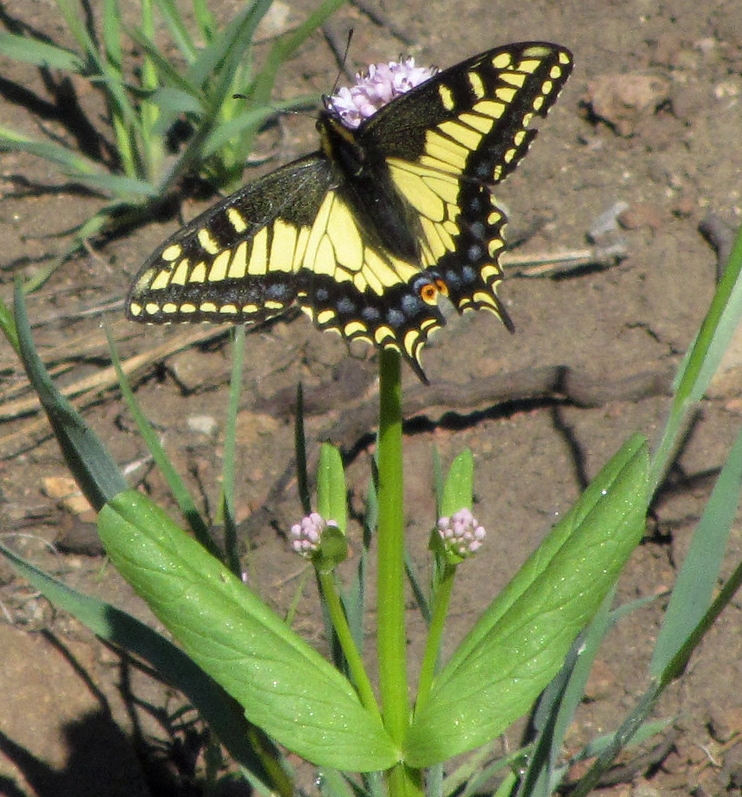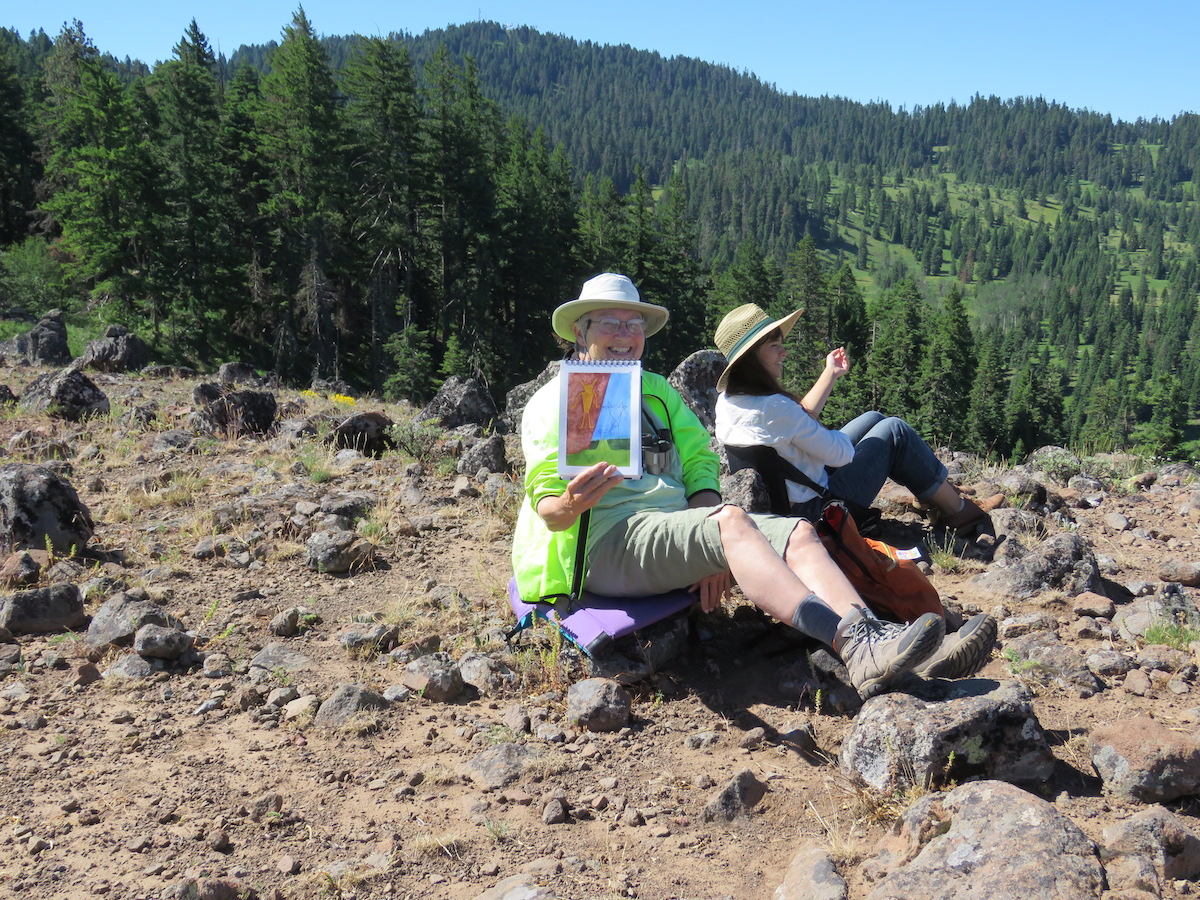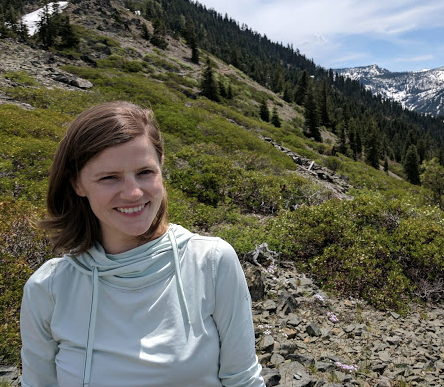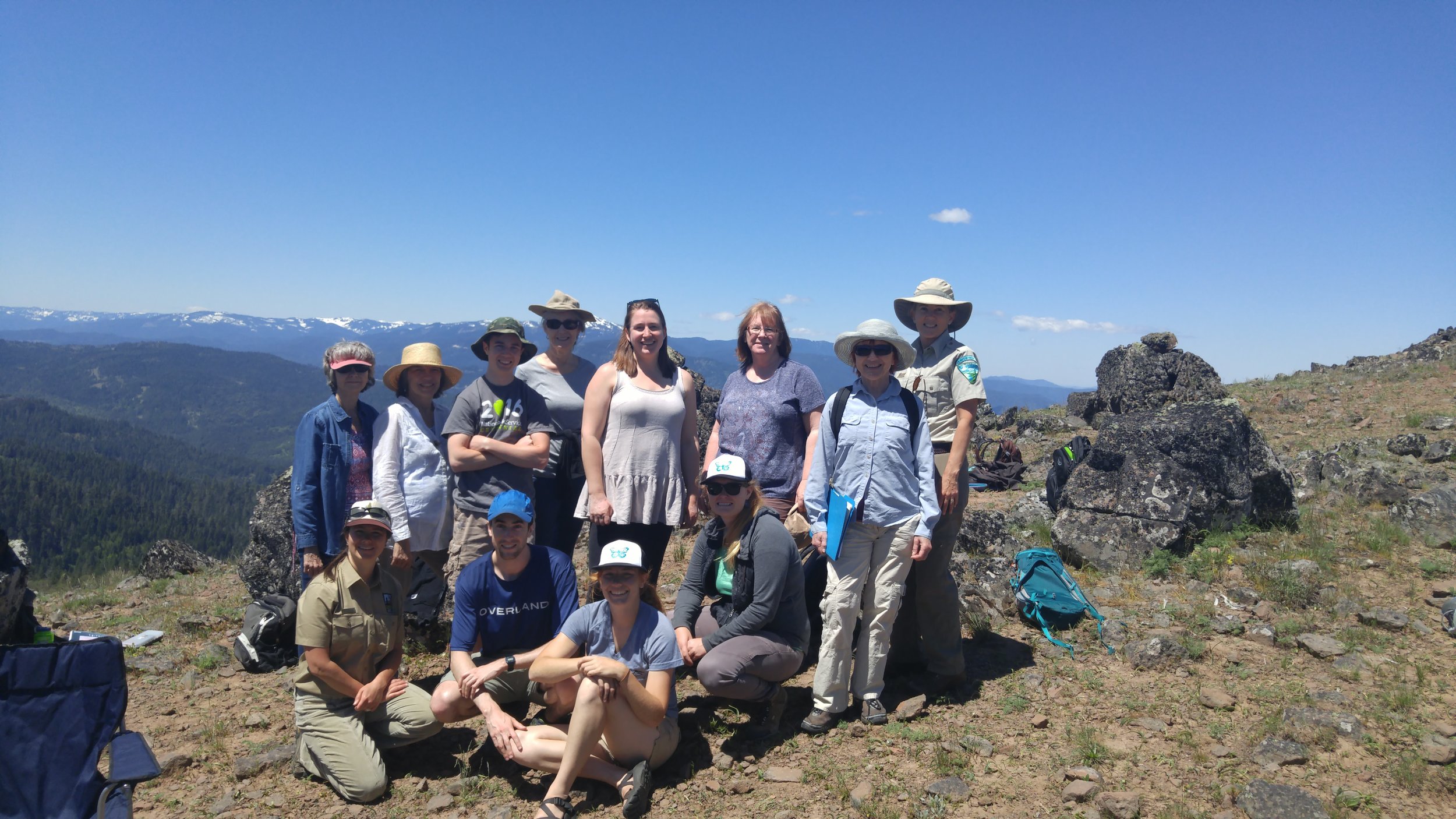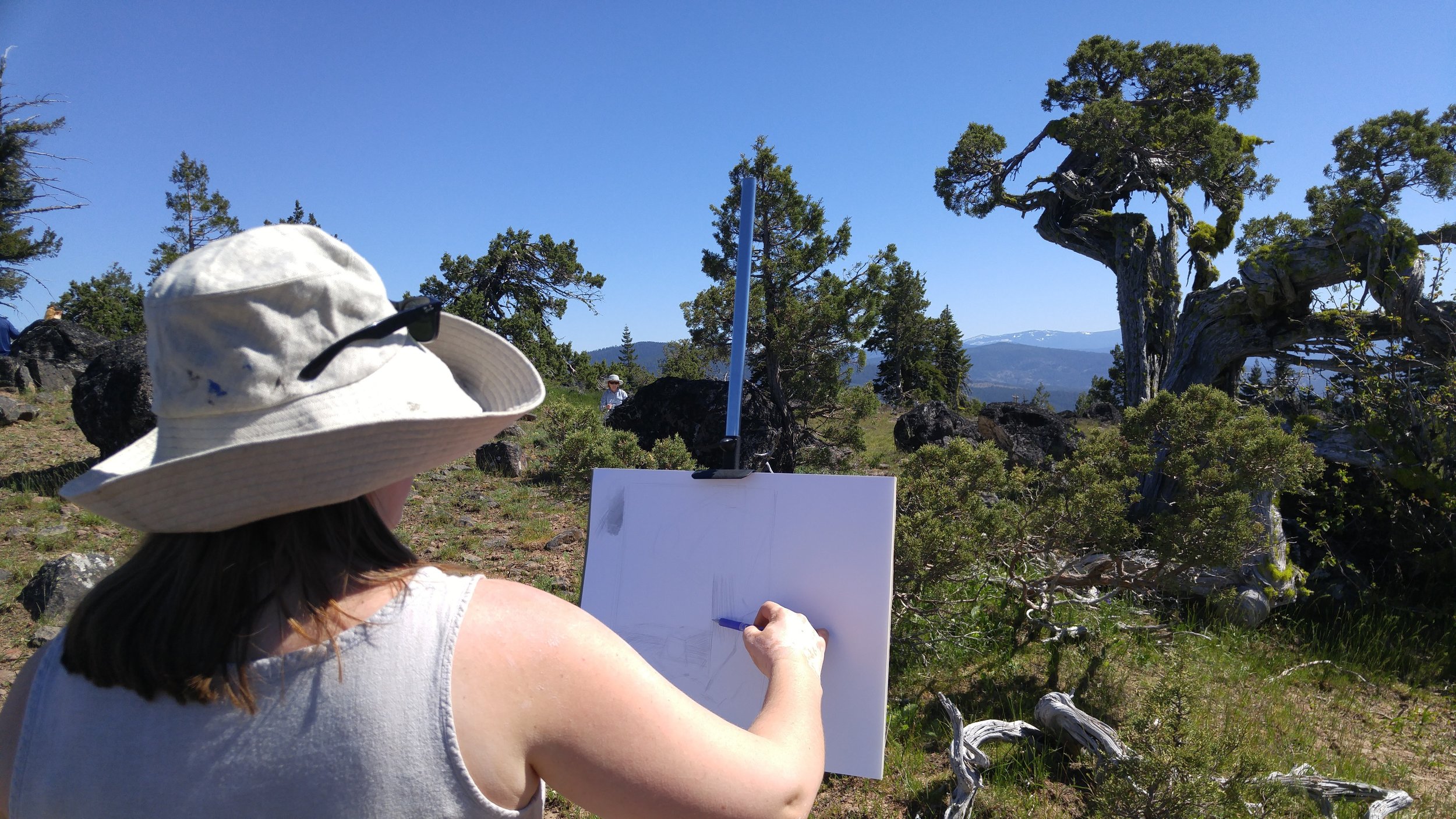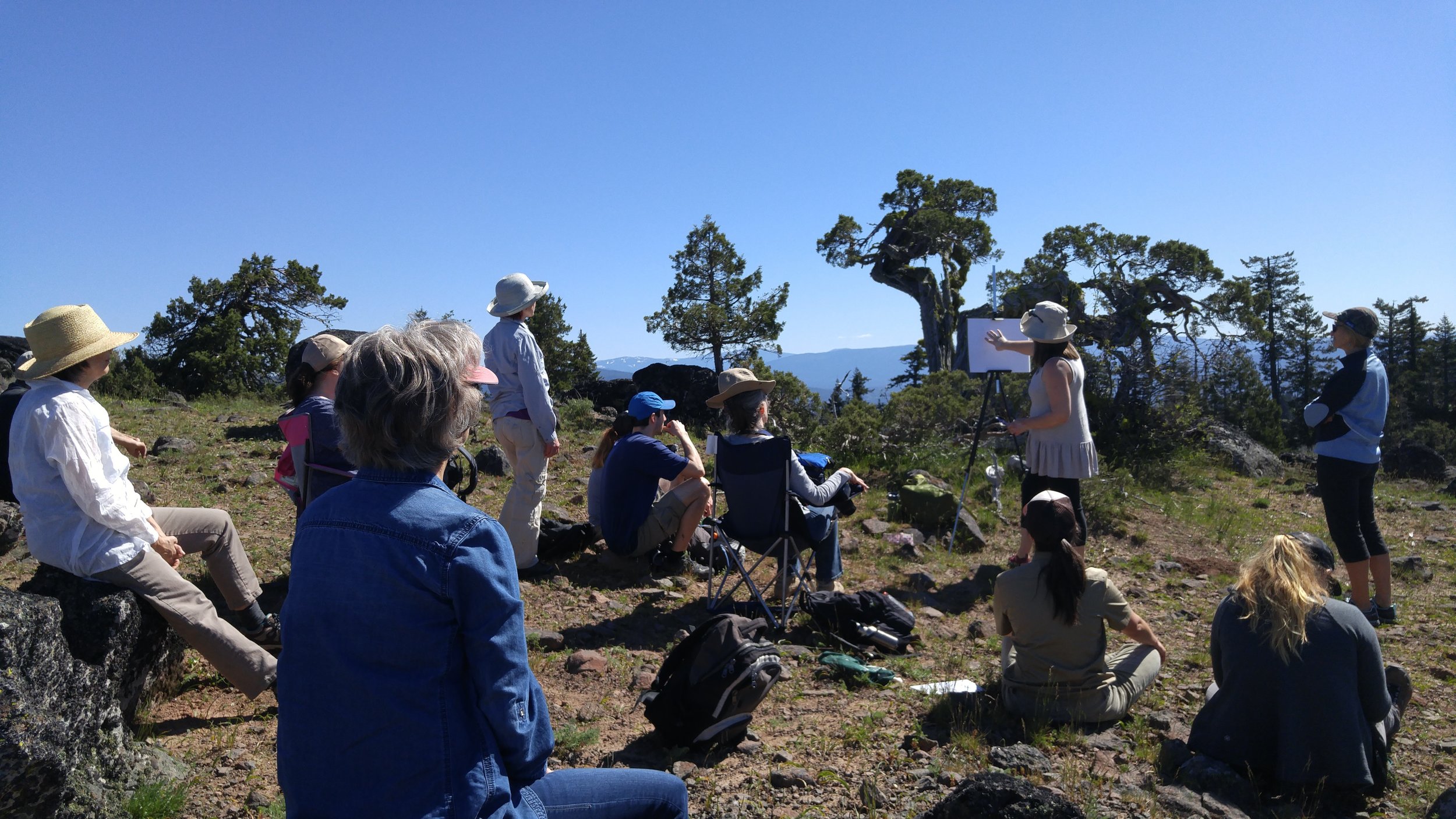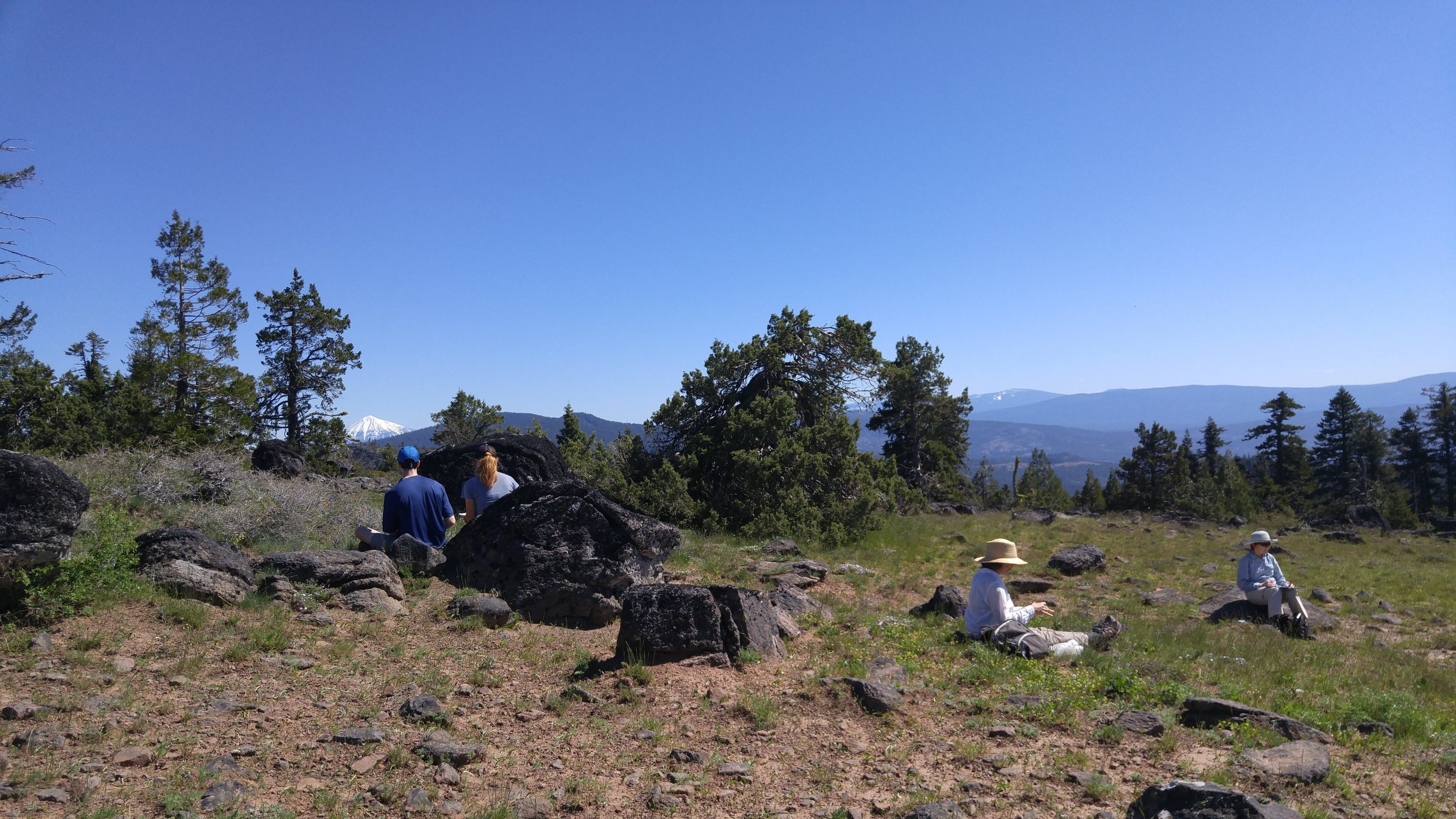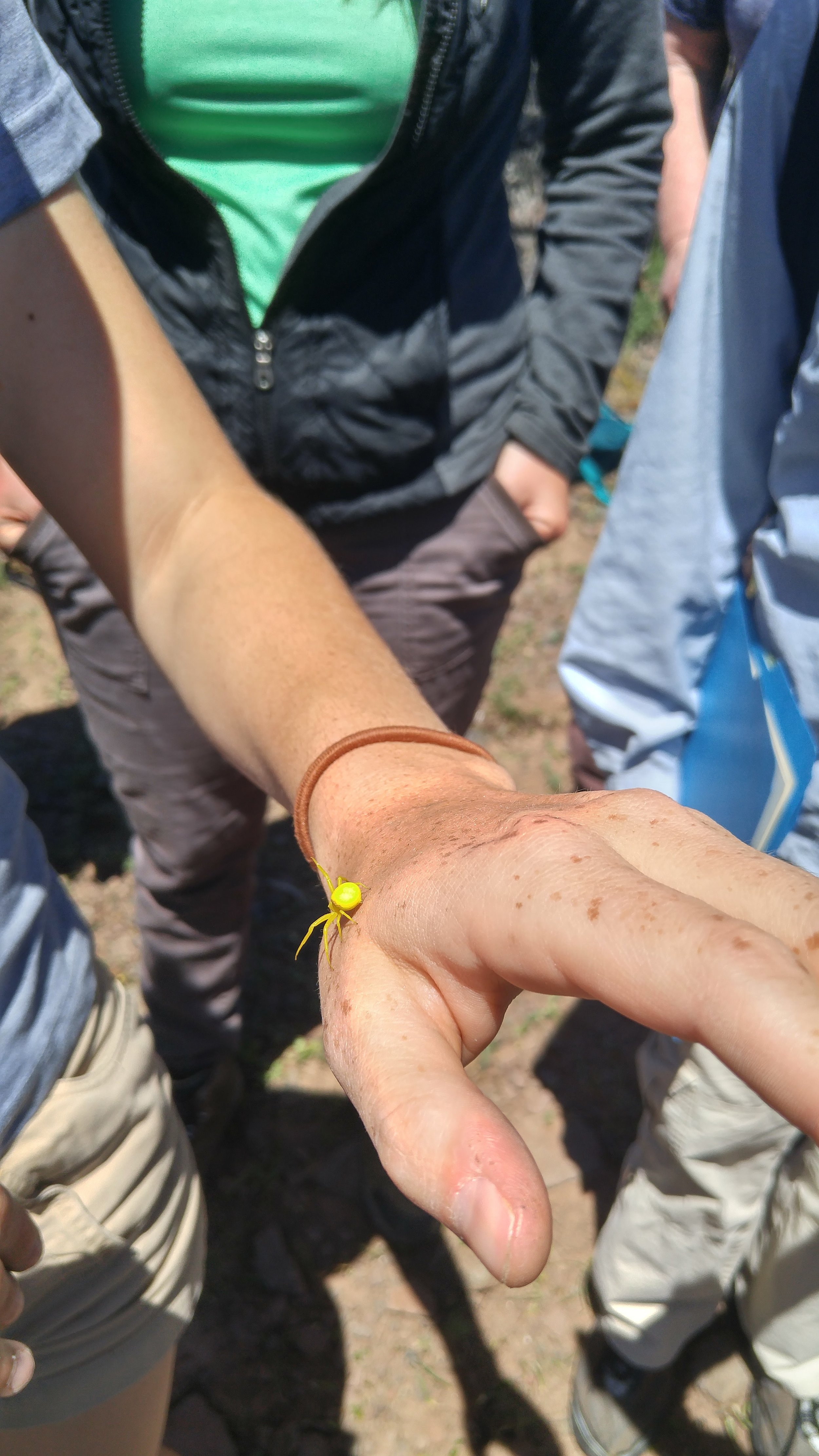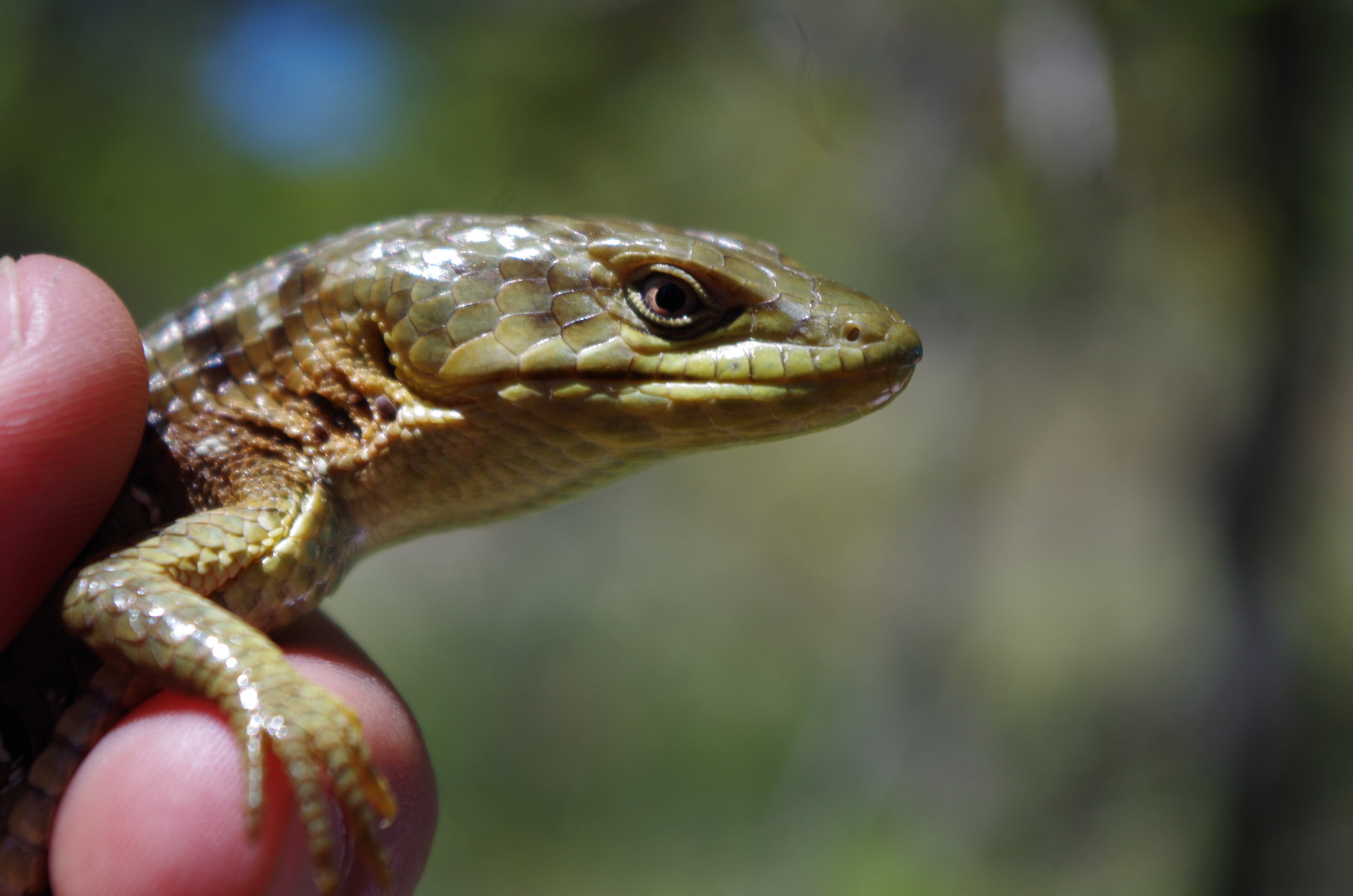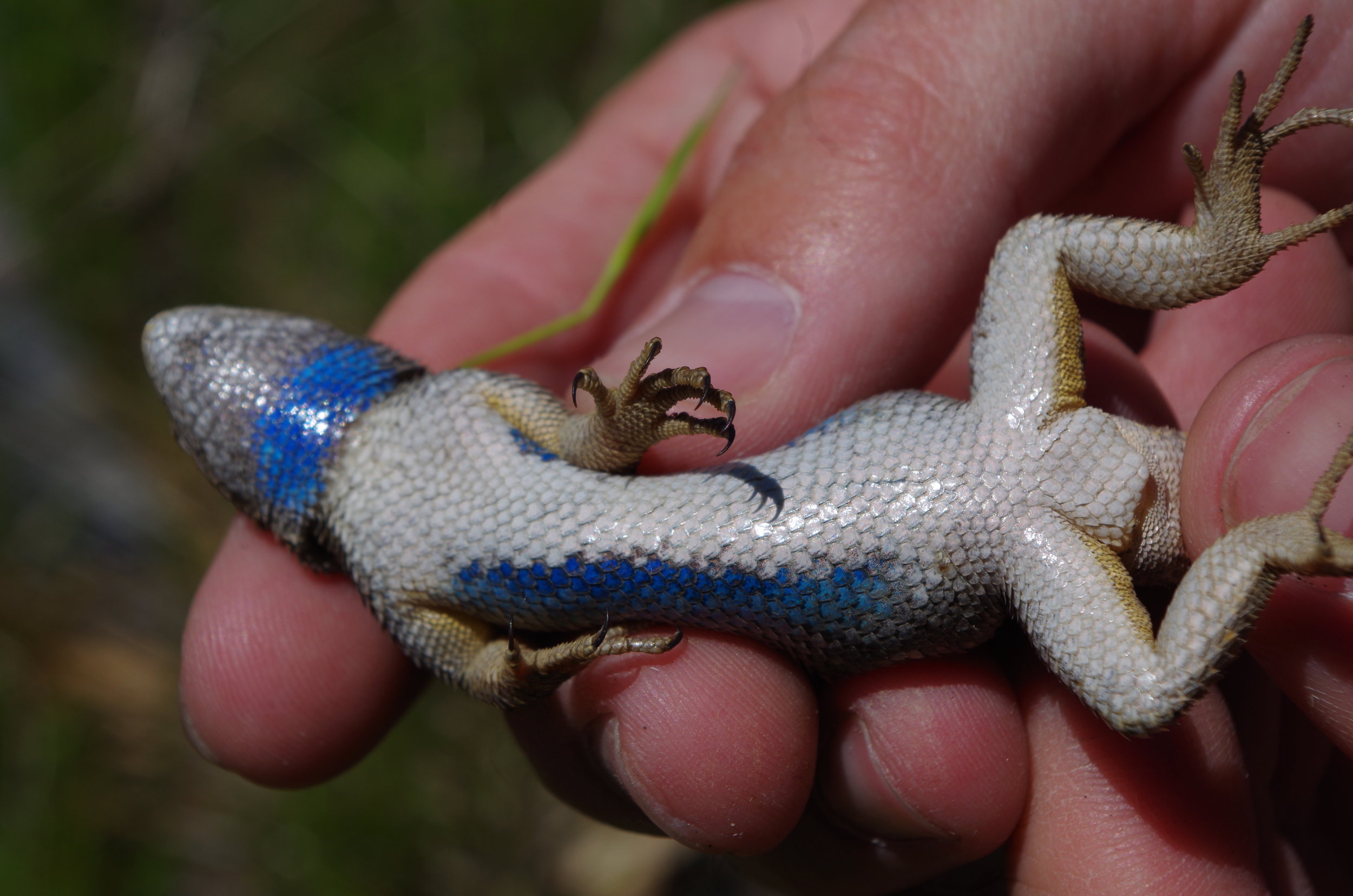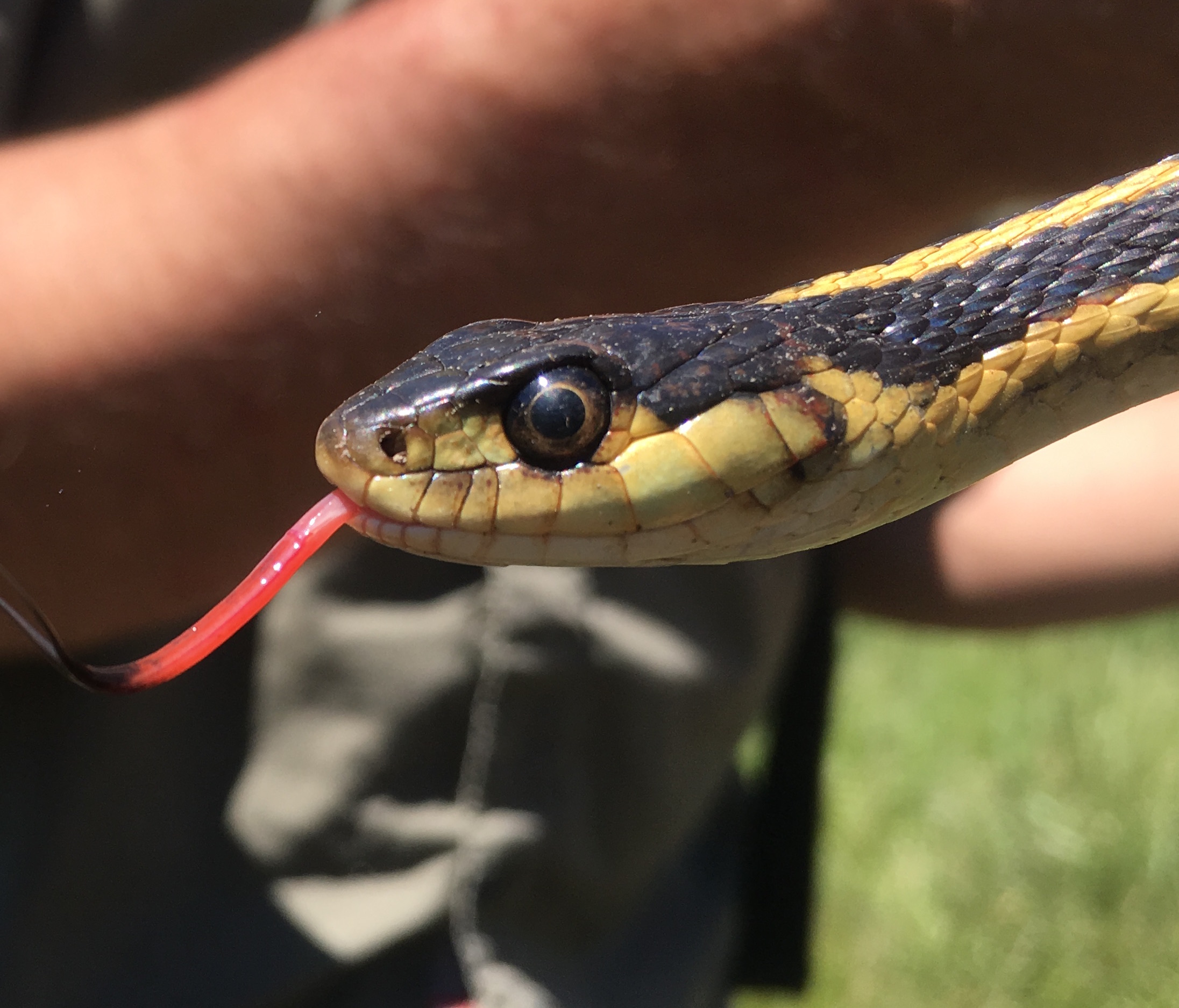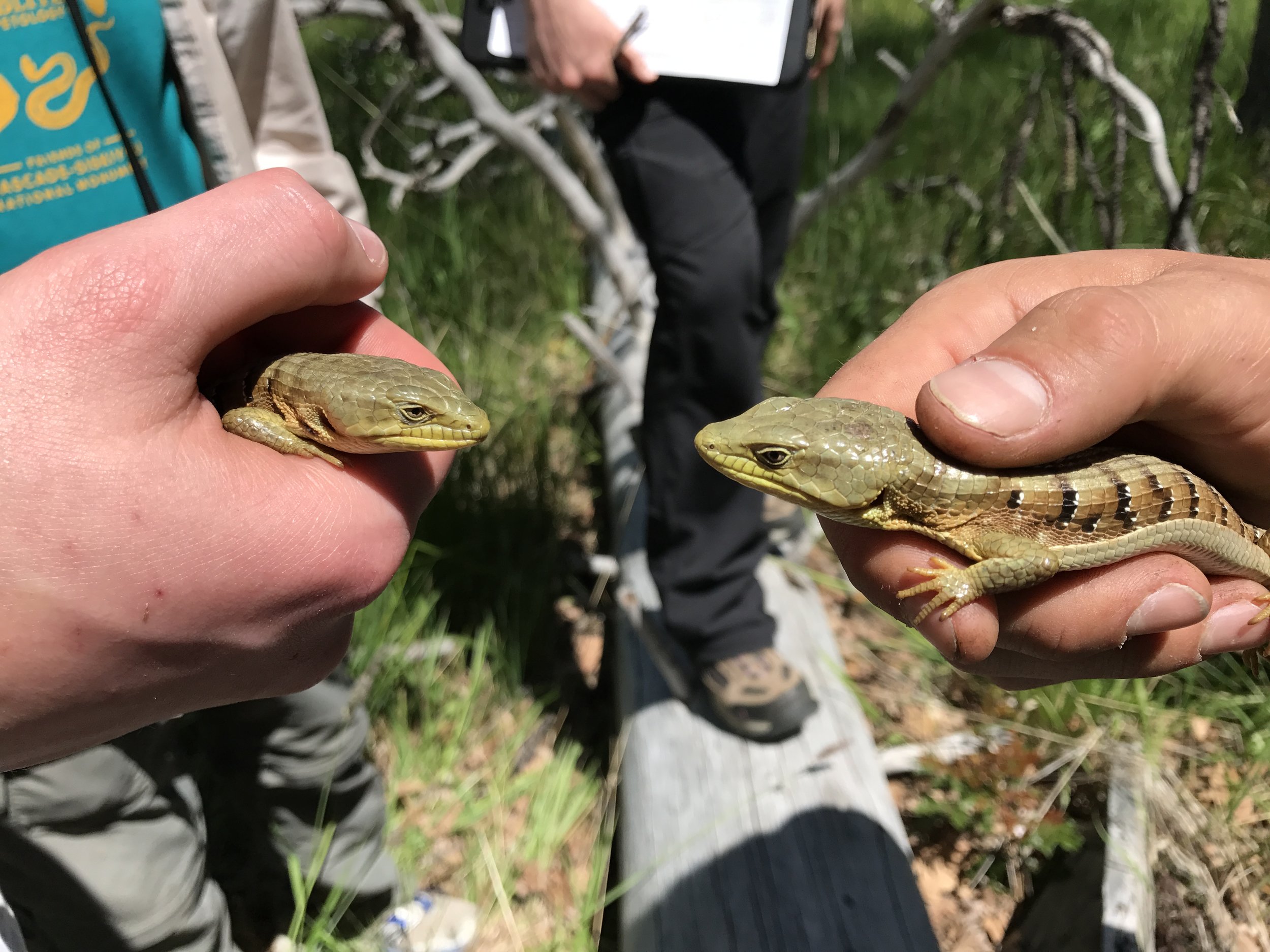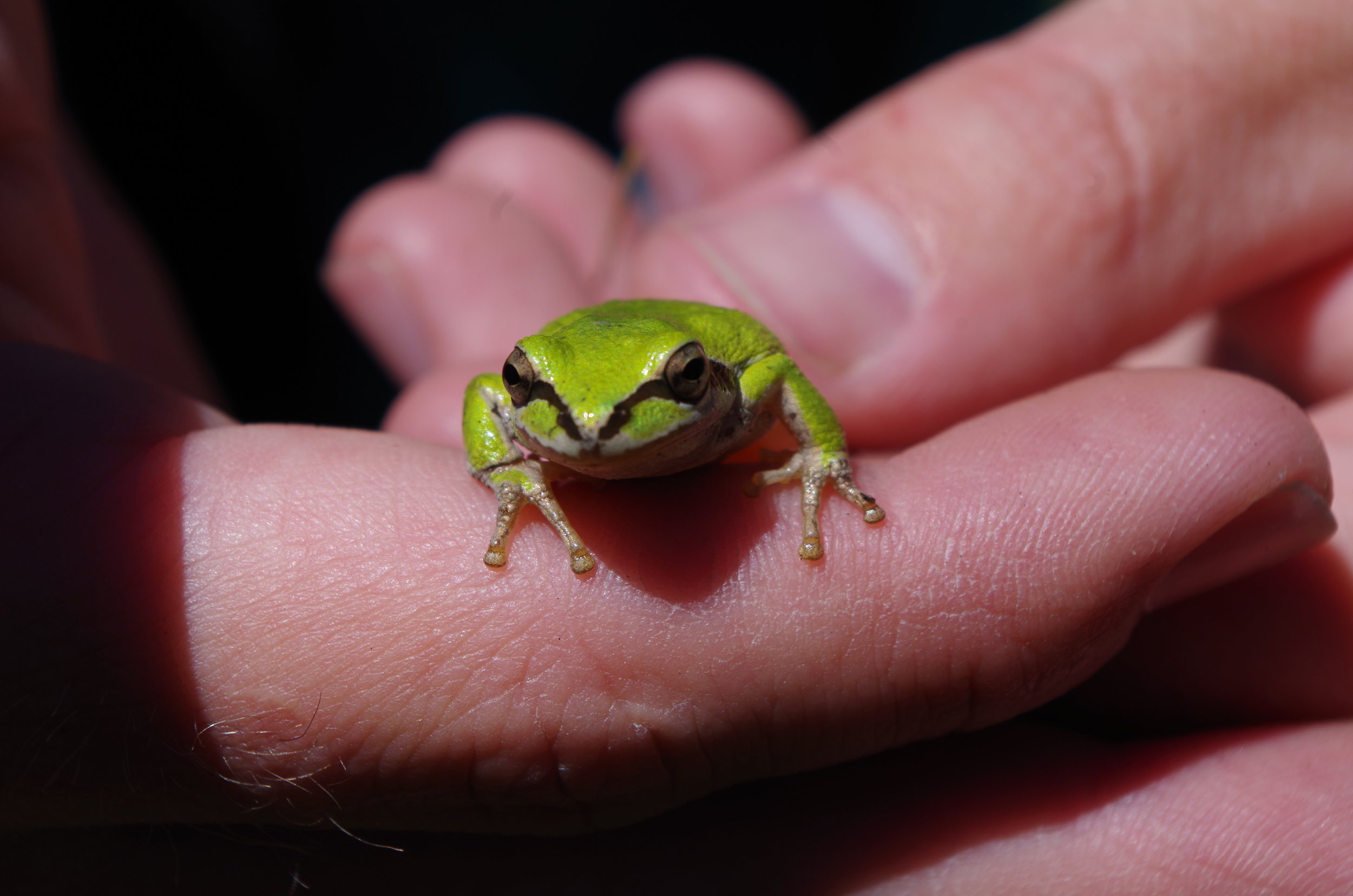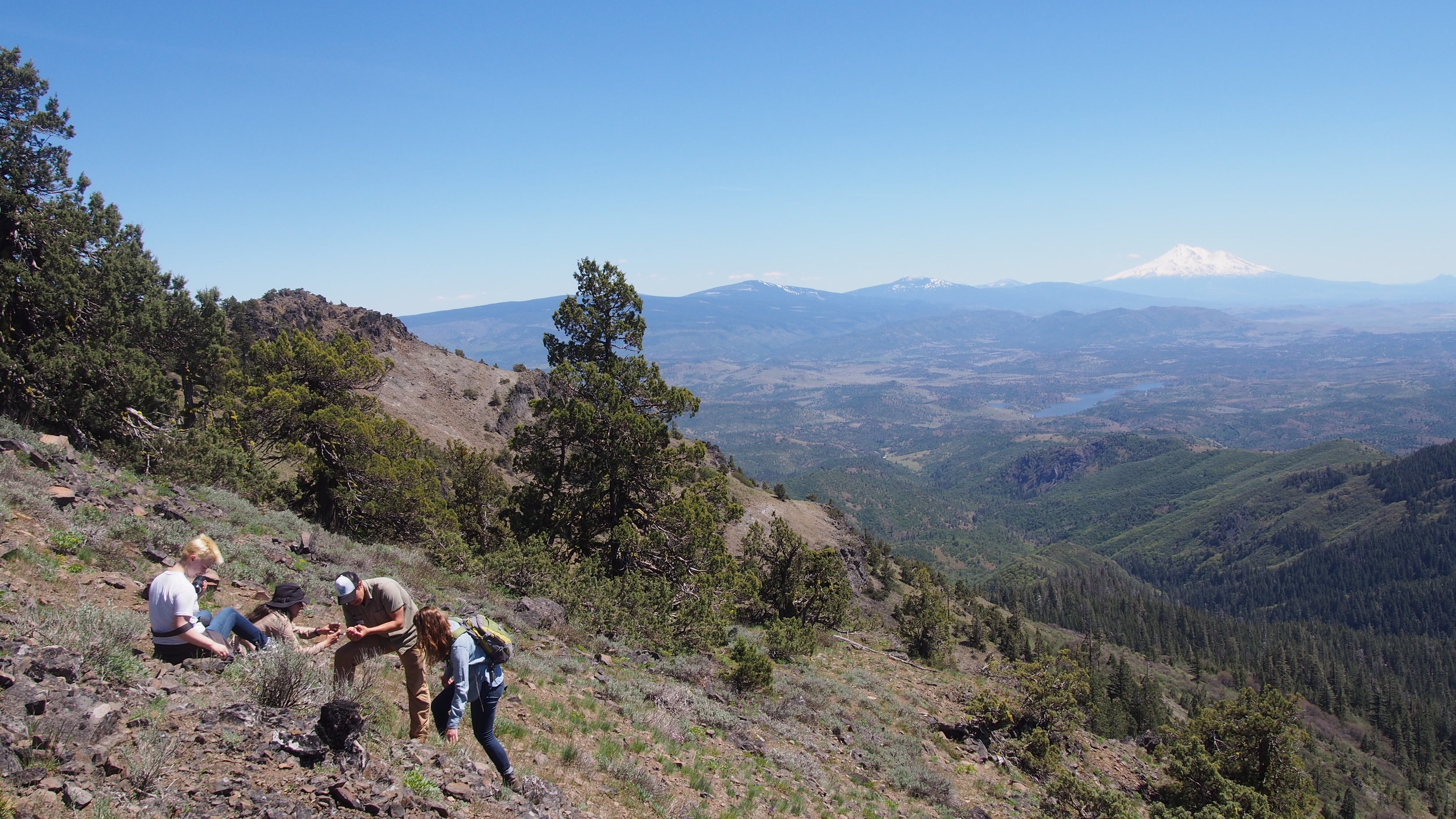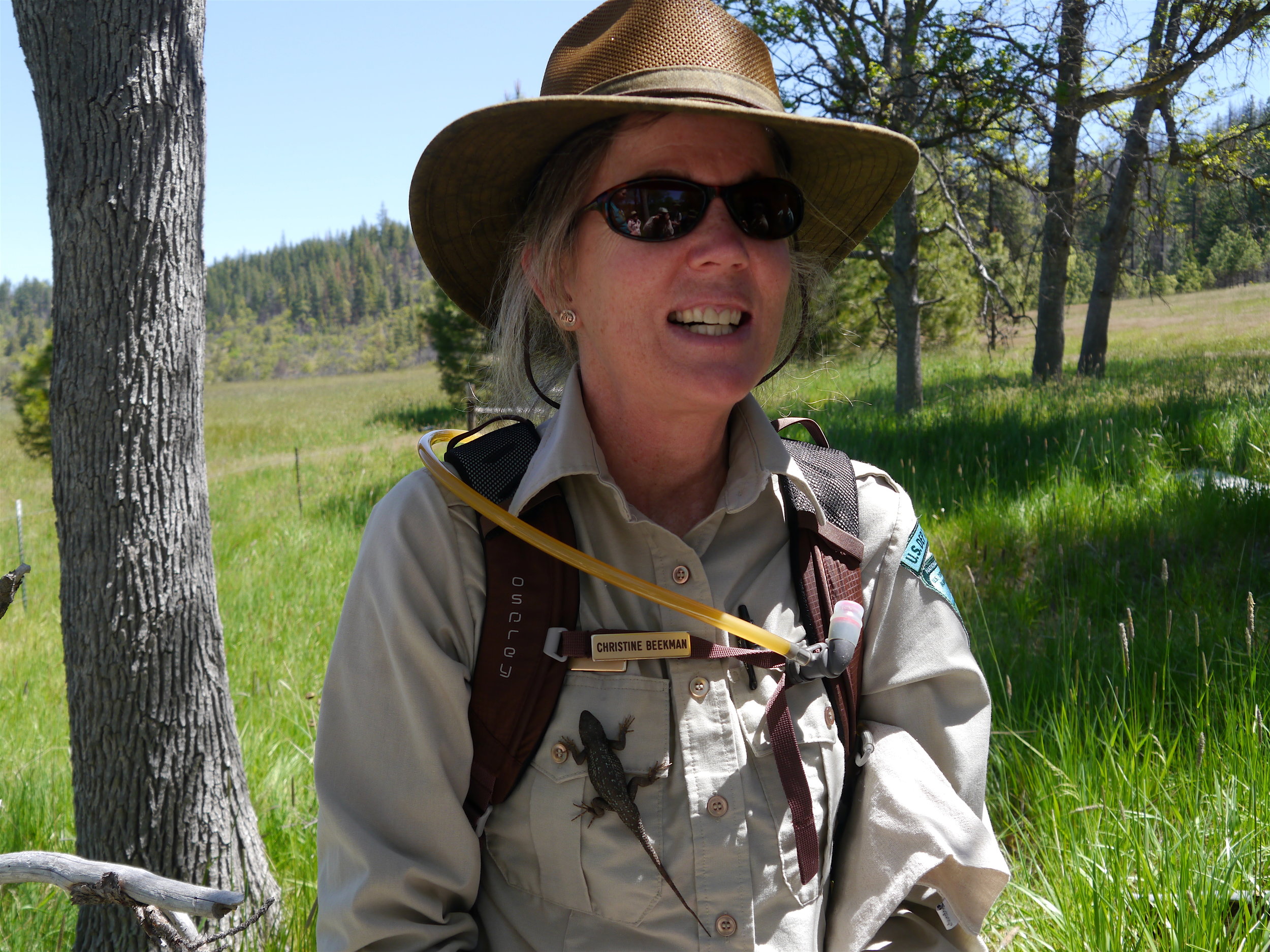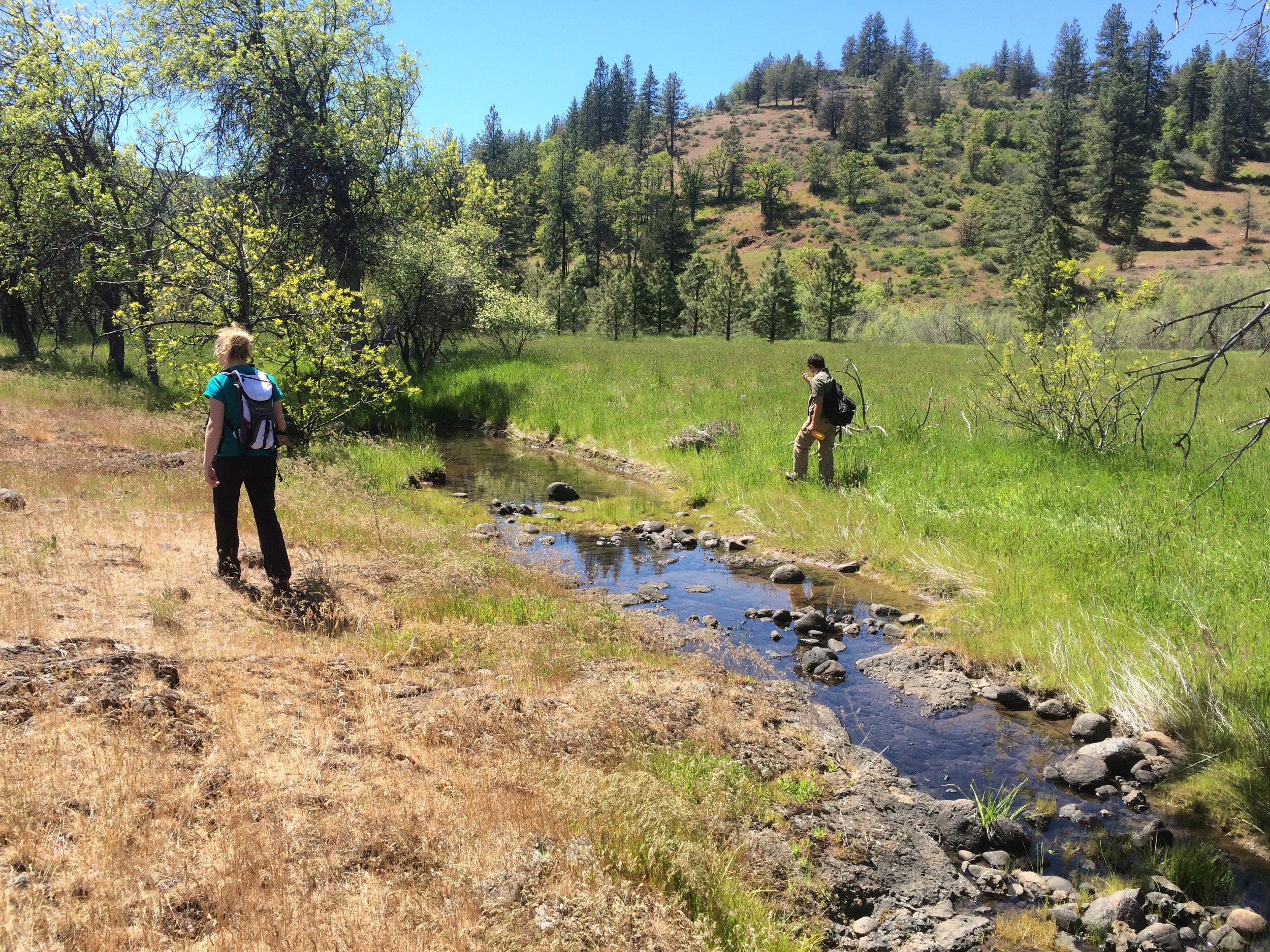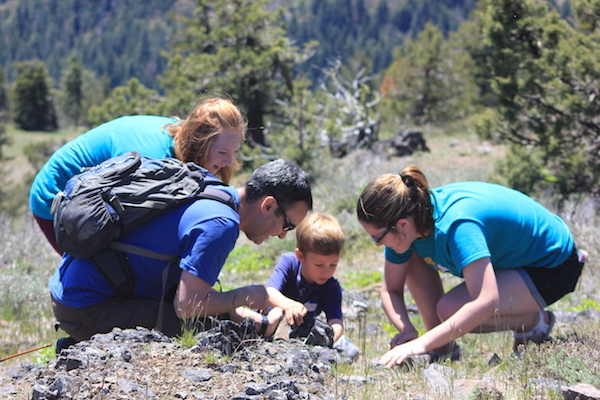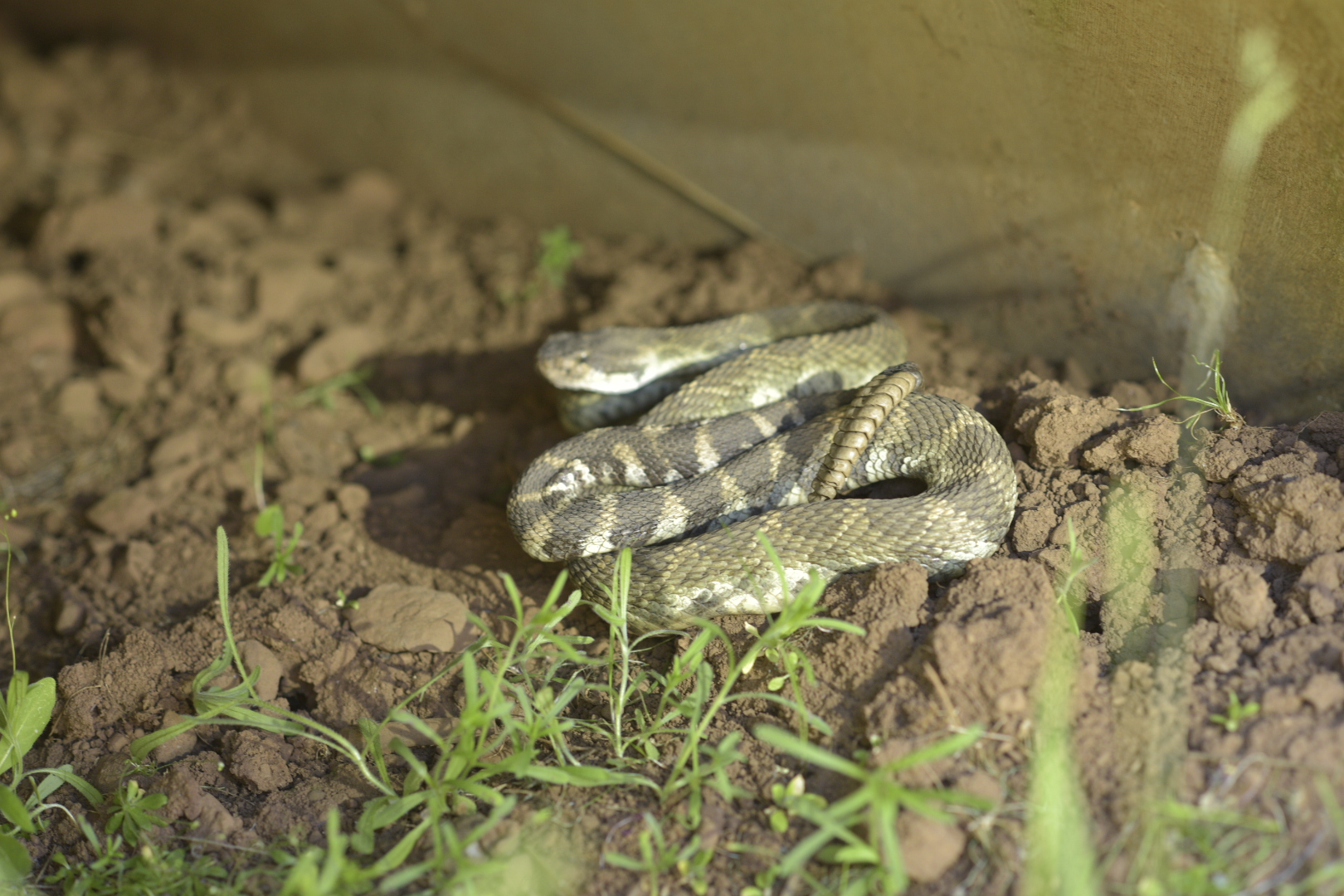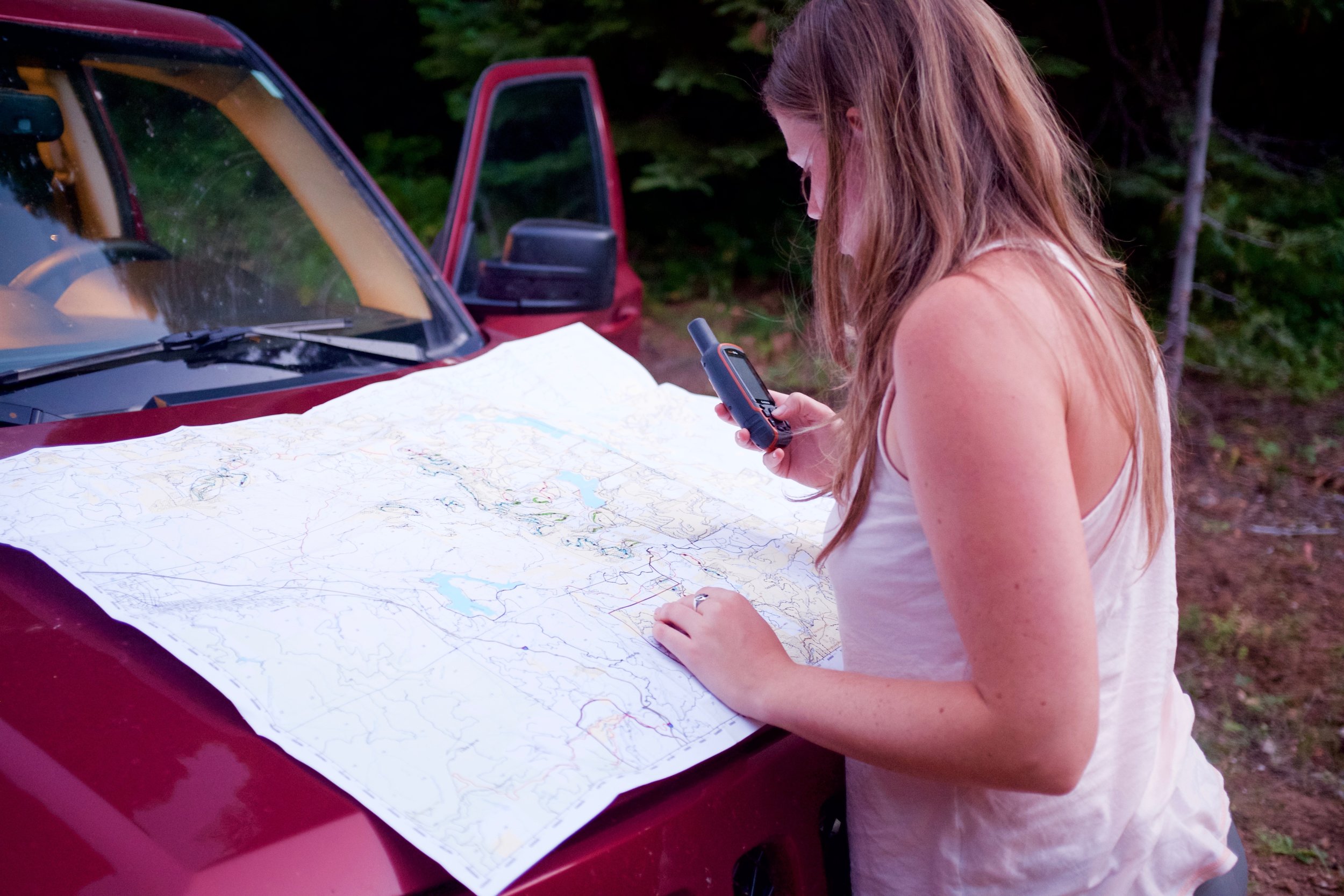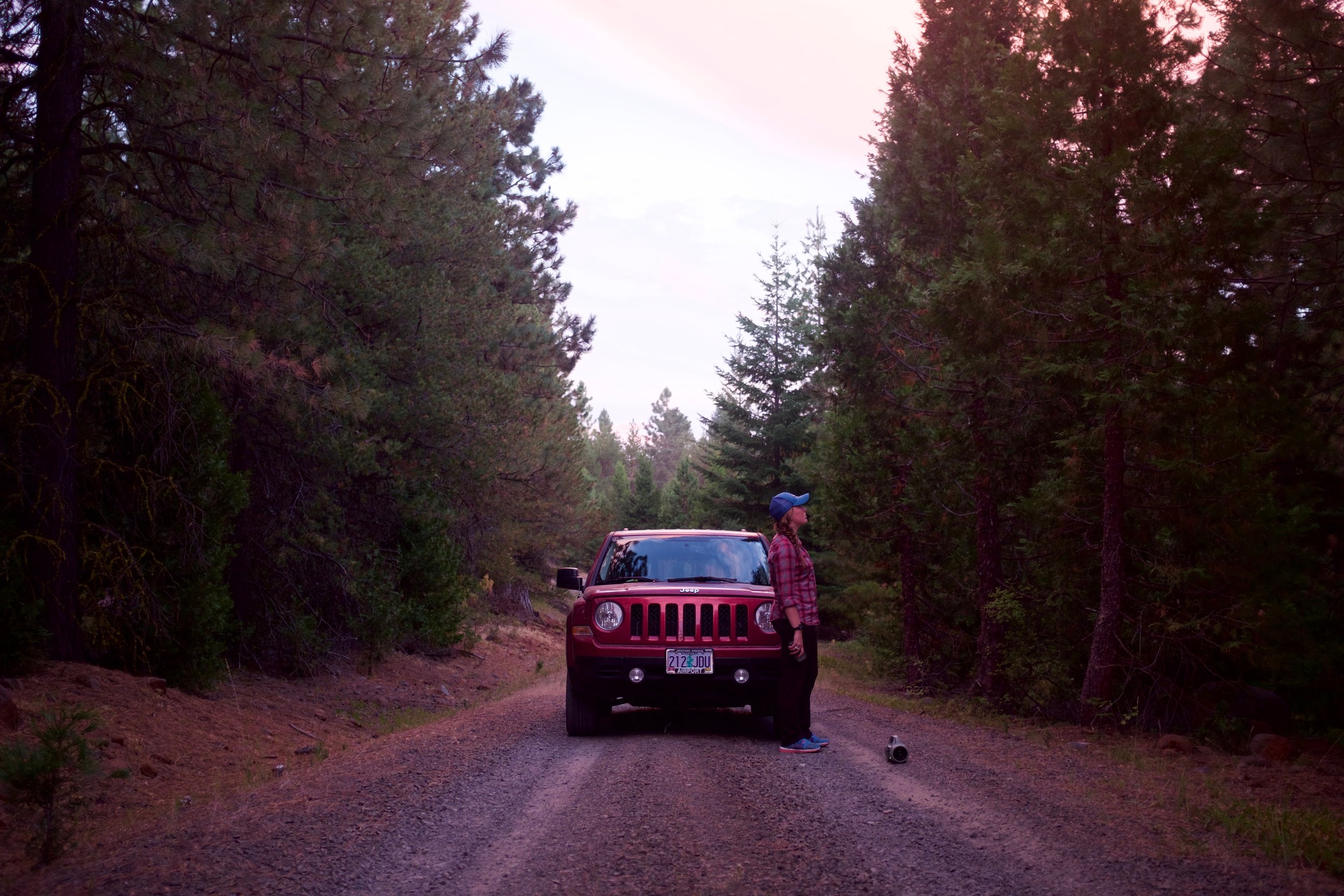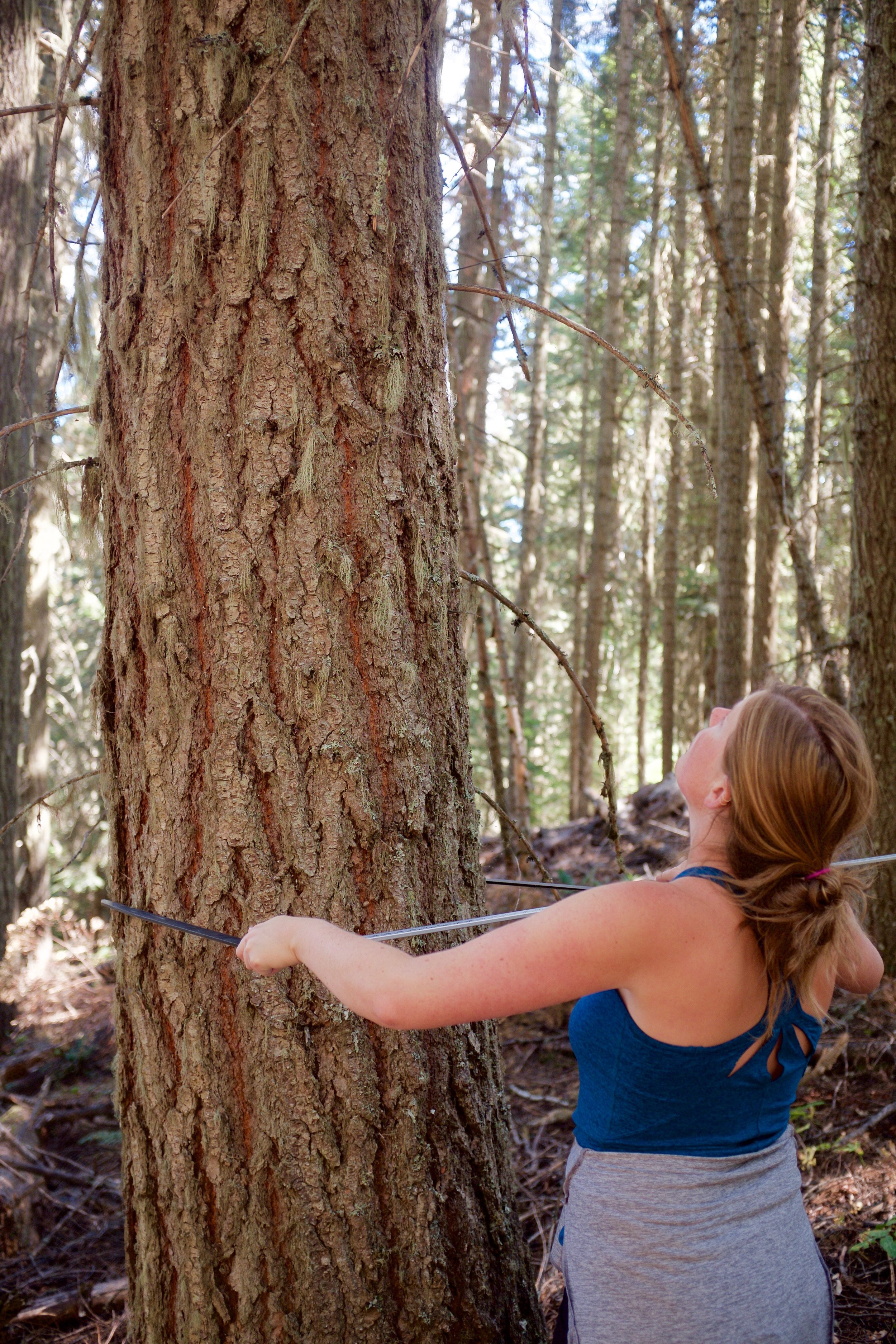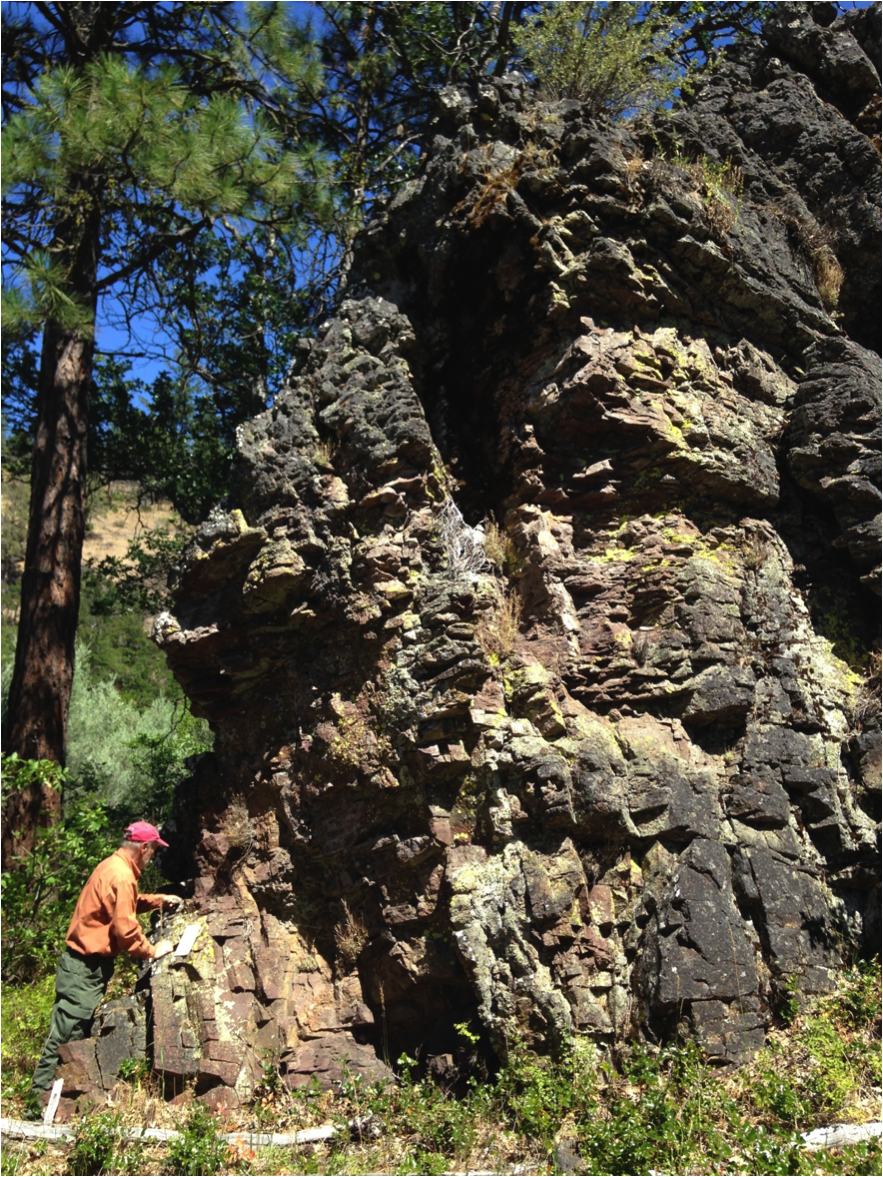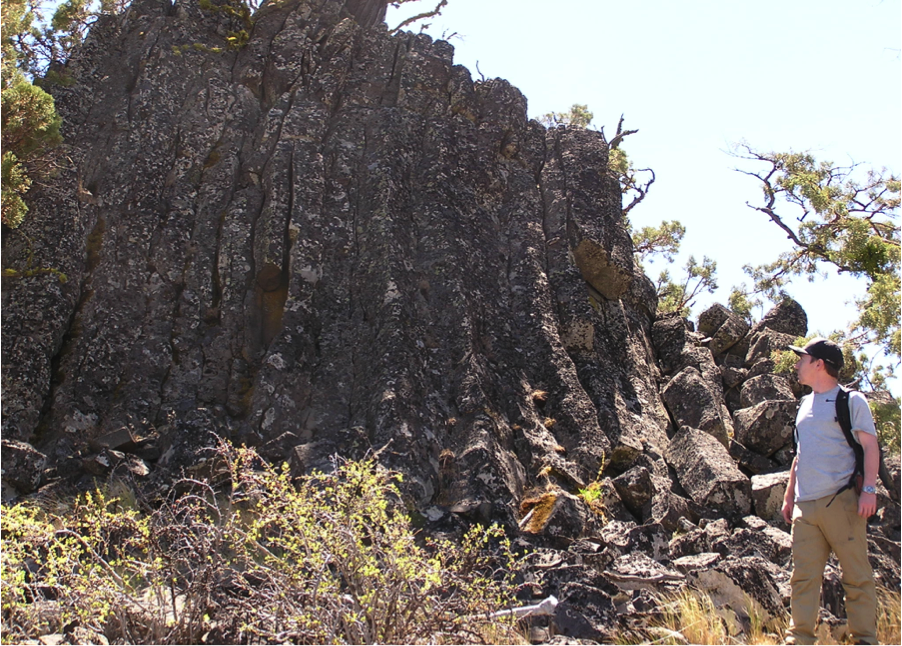LEAVE NO TRACE. Keep it natural - Leave what you find. An elaborate labyrinth has been created on the top of Grizzly Peak. It will soon be dismantled and its components returned to their natural state on the ground. CBeekman 2017 photo
Leave What You Find. Leave No Trace principles are practiced on monument lands, so that we can minimize our impacts on the landscape. This includes "leave the things as you found them."
Monument staff marks trails with signs and posts, and not rock cairns (or piles of rocks). If you see cairns along any trail, feel free to dismantle them and gently disperse the rocks back onto the ground.
Remember: take only photos, leave only footprints! We can all take care of our monument's biodiversity.
Go with Interpretive Interns! Rangers Elizabeth, Becky and Morgyn continue to attract more and more CSNM visitors to the information station at the Greensprings, and to their interpretive programs. Ranger Elizabeth had 30 folks at her recent evening program. Everyone in attendance learned more about the monument's geology and how it sets the stage for its unparalleled biodiversity! Go on guided walks or listen in at an evening program. Kids can earn Junior Explorer badges. See free program offerings for the remainder of the summer, through September 3, 2017.
Delphinium (Delphinium menziesii) CBeekman 2017 photo
Sign in at Trailheads. CSNM's outdoor recreation planner, Kathryn Lloyd, and park ranger, Rick Bishop are installing trailhead registers at popular trails. So the next time you're starting the Grizzly Peak, Pilot Rock or Hobart Bluff trails, be sure to sign in!
Grizzly Peak trail has had a delightfully long wildflower season. Visitors on the trail constantly comment on nature's brilliant display of paintbrush, sunflowers, larkspur, and fleabane daisies, among others.
See Secretary of Interior Ryan Zinke's video tour (July 2017) of Cascade-Siskiyou National Monument.
Look for 2017 Artists-in-Residence work. Photographer Matt Witt presents an public presentation (August 18) of his work in the monument and the expansion. Read and see the photographs in Mail Tribune. In September 2017 the Group Show of Artists-in-Residence will be featured at the Ashland Art Gallery, 2nd Floor.
Report and photos by
Christine Beekman, Interpretive Specialist
Cascade-Siskiyou National Monument
BLM Medford
